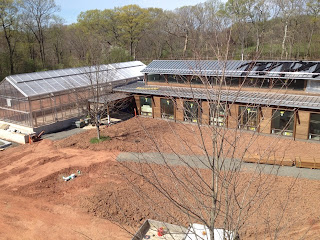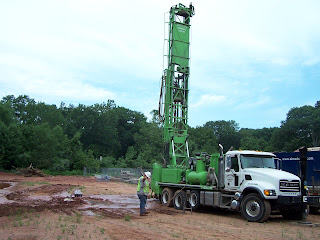Evacuated tubes manufactured by Cinco Solar will be used to make hot water on the roof of the KEC. This renewable energy source is part of the building's overall strategy to achieve LEED Platinum and Net Zero Energy. Lets take a look at how this system works.
The heat pipe is attached to the back of an absorber plate. Evaporator fluid is contained within the heat pipe. These components are housed within a vacuum sealed glass tube for maximum insulation and heat retention. Solar energy is transferred through the absorber plate and the heat pipe and into the evaporator fluid, converting it to vapor. The vapor rises to the condenser bulb at the top of the heat pipe. The condesnor bulb is connected to a manifold via a dry socket. Water is pumped through the manifold and absorbs heat through the dry socket. The condenser bulb releases the latent heat of evaporation in the water flowing through the manifold and the vapor condenses. The condensate returns to the bottom of the heat pipe and the cycle is repeated.
[sample photo]
The benefit of evacuated tubes over other types of solar hot water systems is they can be used in cold climates, they generate heat on cloudy days, and they can be used for space heating in addition to domestic hot water. They are typically more expensive than flat plate collectors.
Progress photos can be seen below:
Progress photos can be seen below:




























